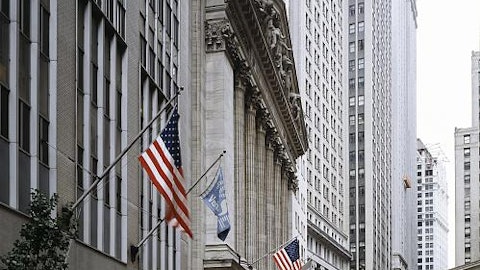In a recent study on insider trading, several researchers from top-tier U.S. universities split insider trading into two groups: routine insider trading activity, and information-rich insider trading activity which contains strong predictive power. The so-called routine insider selling is usually driven by diversification or liquidity reasons. For instance, investors and stock market participants might have noticed that Bill Gates trades in a pre-announced, routine fashion, as does Tim Cook.
On the other hand, only a small portion of the overall insider buying activity can be considered routine. For example, one could view the insider buying conducted by freshly-appointed board members and executives in order to meet stock ownership guidelines as routine. Going back to the aforementioned study, the researchers behind it found that the abnormal returns associated with routine trades were essentially zero, whereas information-rich insider transactions, called opportunistic, yielded abnormal returns of 82 basis points per month. That said, the following article will discuss a set of noteworthy insider transactions reported with the SEC on Wednesday.
At Insider Monkey, we’ve developed an investment strategy that has delivered market-beating returns over the past 12 months. Our strategy identifies the 100 best-performing funds of the previous quarter from among the collection of 700+ successful funds that we track in our database, which we accomplish using our returns methodology. We then study the portfolios of those 100 funds using the latest 13F data to uncover the 30 most popular mid-cap stocks (market caps of between $1 billion and $10 billion) among them to hold until the next filing period. This strategy delivered 18% gains over the past 12 months, more than doubling the 8% returns enjoyed by the S&P 500 ETFs.

Insider at North Carolina-Based Commercial Bank Buys Shares
Live Oak Bancshares Inc. (NASDAQ:LOB) was one of the few companies that saw insiders buy shares this week. William L. Williams III, Executive Vice President and Vice Chairman of the company’s Board of Directors, bought a new stake of 30,000 voting shares on Monday and an additional 20,000 shares on Tuesday at prices ranging from $20.05 to $20.45 per share. These shares are held in a grantor-retained annuity trust (GRAT). Mr. Williams also holds a direct ownership stake of 1.25 million shares.
The bank holding company for North Carolina-based commercial bank Live Oak Banking Company has seen the value of its stock increase by 44% in the past year, which would normally encourage insiders to sell rather than buy shares. The bank focuses on offering lending services to small businesses across the nation in targeted industries. According to a fresh public statement, Live Oak Bancshares Inc. (NASDAQ:LOB) ended the previous year in “terrific fashion” (was Donald Trump behind this statement?), hitting its highest ever quarterly production with more than $500 million in loan originations. The company’s management anticipates strong double-digit growth in origination volumes going forward. Small-cap specialist Royce & Associates, founded by Chuck Royce, owned 136,600 shares of Live Oak Bancshares Inc. (NASDAQ:LOB) at the end of September.
Follow Live Oak Bancshares Inc. (NASDAQ:LOB)
Follow Live Oak Bancshares Inc. (NASDAQ:LOB)
The next page of this insider trading article will discuss fresh insider buying observed at two other companies.





